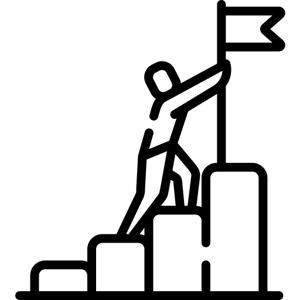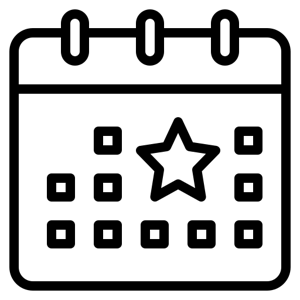- 8 minute read
- Content Marketing
- Digital Marketing
All Skill Levels
Get a behind-the-scenes-look into FareHarbor's 2024 season

Social media can be as time-consuming as you allow it to be — both as a user and as a marketer. But as a business owner, you might feel like it’s not worth the time when you’re not seeing results. Like every other marketing channel, your social media campaigns require a well-defined strategy if you want to see a significant return on investment (ROI).
Not sure where to start? Check out these tactics and strategies to improve social media ROI.
 1. Start with a Measurable Goal
1. Start with a Measurable GoalYou can’t truly measure the performance of your social media campaigns if you don’t set a goal first. Before you create any posts or implement tactics, define your desired outcome. For example, if the goal is to increase brand awareness, you’ll want to measure impressions, new followers, and mentions. If the goal of an ad campaign is to increase bookings, you’ll want to measure click-throughs and conversions.
 2. Don’t Skip the Audience Research
2. Don’t Skip the Audience ResearchYou might be itching to get that first post of your campaign published, but first you need to get to know your target audience. Audience research might sound like a lot of work, but it’ll help you refine your campaign and ensure that it appeals to your target audience, giving you a better chance for success.
Start by engaging in social listening to learn more about your current audience. What are they saying about your business and your industry? How are they currently engaging with your content?
If you’re targeting a new audience, do some research on their behaviors and preferences to tailor your content to them. For example, if you want to reach Gen Z travelers, you should focus on platforms like YouTube and Instagram, which have an influence on their travel decisions. If you’re targeting senior travelers, you’ll want to focus on in-depth content that helps them plan their trip.
Want even more insight into your audience? Use a tool like Google Surveys to directly ask them what you want to know, like the most important factor they consider when booking a tour.
 3. Track Your Campaigns
3. Track Your CampaignsIf you’re not tracking the traffic and conversions that come from your social media posts, you might not realize they’re actually working!
You can easily see where your traffic is coming from by using UTM tags, short codes you can add to a URL to track clicks. For example, if you’re promoting the same page on your newsletter and social media profiles, you can use different UTM tags for each medium so you’ll know exactly which one is driving the most traffic to your page. Check out our guide to implementing UTM codes to get started.
For paid social media ads, Facebook Pixel is an invaluable tracking tool. It allows you to track where conversions come from, target custom audiences, and remarket to users who have interacted with your website. Use this handy checklist to set up Pixels.
 4. Create Video Content
4. Create Video ContentMarketers have been touting the power of video on social media for a while now. If we thought video was important a few years ago, it’s even more so now that so much of social media is moving toward the TikTok-inspired vertical video format.
According to a poll by Databox, 68.7% of marketers say video is the best-performing format for Facebook ads.
Instagram recently made waves by announcing the photo-based app was going to shift its focus to video. All signs point to the fact that video is crucial to engaging your audience.
A few tips to keep in mind when creating video content:
 5. Post Regularly
5. Post RegularlyIf you’re only posting sporadically to promote a deal or event, chances are those posts aren’t performing well. Maintaining a regular posting schedule helps you nurture a relationship with your followers, and you’ll see an impact on your engagement. Social media algorithms take that engagement into account when deciding who to show your post to. Having an interaction history with your brand will make users more likely to see your post on their feed.
Start by creating a social media calendar to plan all your posts and campaigns in advance. Next, schedule out all your posts using a scheduling tool. That way you know your posts are getting published on time while you’re busy running your tours or activities. (You can use this cheat sheet to find the best times to post on each platform.)
Try out these strategies and tactics to see your ROI grow! Be sure to closely track the performance of all your campaigns and use these insights to further refine your strategy. Want to continue improving your social media presence? Check out these 7 mistakes you want to avoid.